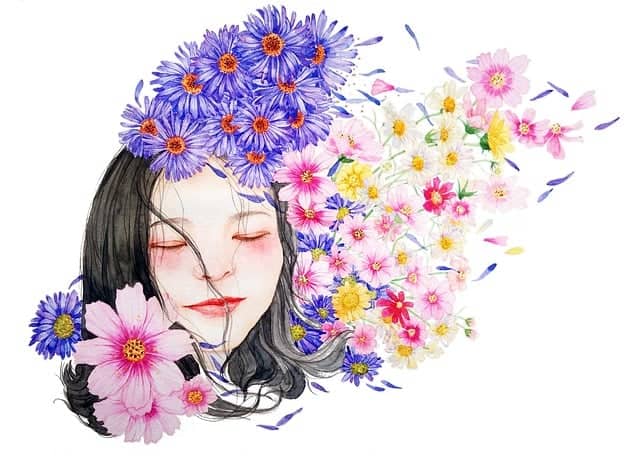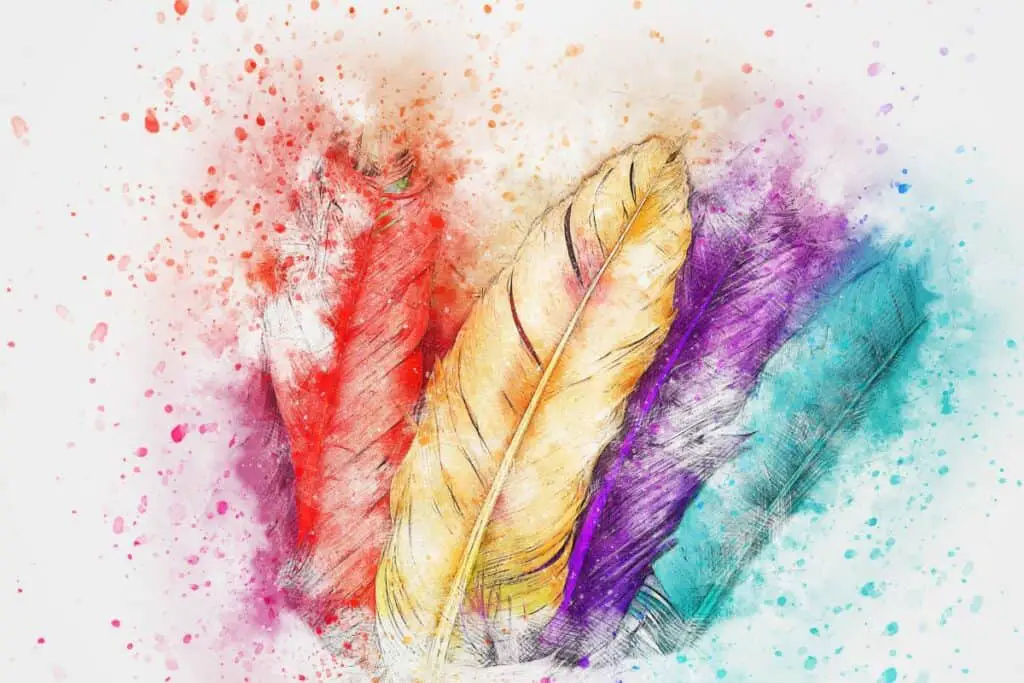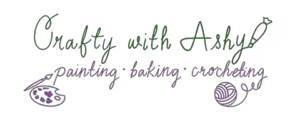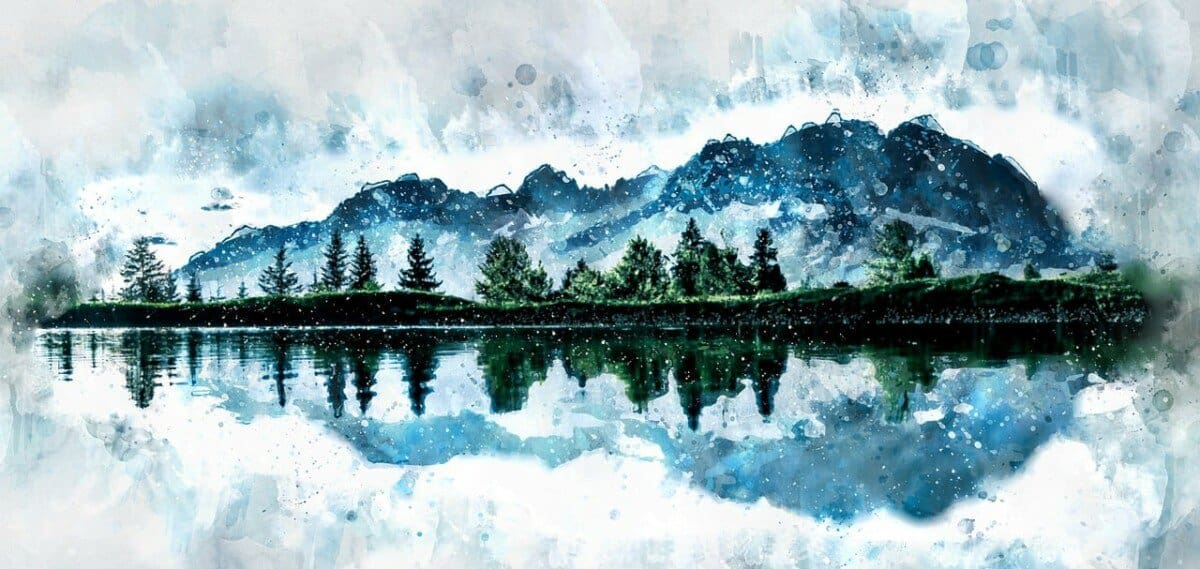Watercolor painting is a fun, relaxing hobby. There are many different styles of watercolor painting, but what is loose watercolor painting, and how is it different than traditional watercolor painting?
Loose watercolor technique means that the painter intentionally left out details. The lack of details allows viewers to make their own interpretations of the art, as the essence of a scene is implied rather than producing an exact replica.
Now you know a little bit more about how to define what loose watercolor is, but loose watercolor is much more interesting to discuss. Below, I will go over the differences between different watercolor painting styles and go into more detail about what loose watercolor is.
What is Loose Watercolor?
Loose watercolor is a type of watercolor painting style that involves the artist intentionally not adding details to their painting. This allows the artist to focus more on the essence of the art piece instead of all of the small details.
“Loose watercolor” is a term used to describe a style of watercolor painting that emphasizes a more spontaneous, free-flowing, and less controlled approach. This style often involves using large washes of watercolor and allowing the pigments to mix and blend in unpredictable ways. It’s characterized by fluid and expressive brushstrokes, with a focus on capturing the spirit of the subject.
In loose watercolor painting, the artist aims to capture the feeling and mood of the subject rather than creating a realistic representation. This style often involves leaving areas of the paper blank (knowns as “white space”) or lightly painted, which creates a sense of lightness and movement. Many artists who paint in this style use wet-on-wet techniques, which involve applying wet paint onto a wet surface, allowing the colors to blend and flow naturally.
Loose watercolor can be contrasted with a more traditional, precise approach to watercolor painting, which typically involves creating detailed and realistic representations of the subject. While both approaches have their merits, loose watercolor is often favored for its expressive and energetic qualities, which can create a sense of spontaneity and liveliness in the finished work.
Oftentimes, loose watercolor is considered more of an intermediate technique due to the lack of precision and detail. Instead, you are intentionally removing details. However, as a loose watercolor painter, you still have to leave enough information for the viewer to be able to understand the painting, which does take skill. Loose watercolor artists are required to be excellent “editors” to understand which details should and should not be added.
How is Loose Watercolor Different from Traditional Watercolor?
Loose watercolor and traditional watercolor are two different approaches to the medium of watercolor painting, and they differ in several ways:
- Technique: Traditional watercolor tends to be more controlled and precise, while loose watercolor is characterized by a more spontaneous and free-flowing approach. In traditional watercolor, the artist typically builds up the painting layer by layer, carefully controlling the water and pigment to create a precise and detailed image. In contrast, loose watercolor often involves laying down large washes of color and allowing the pigments to mix and blend in unpredictable ways.
- Realism vs. Expression: Traditional watercolor often aims to create a realistic representation of the subject, with careful attention paid to detail and accuracy. Loose watercolor, on the other hand, is more focused on capturing the essence and mood of the subject, with less emphasis on realism and more emphasis on expression.
- White Space: Traditional watercolor typically involves covering the entire surface of the paper with paint except potentially the “light”, while loose watercolor often leaves areas of the paper blank or lightly painted. This creates a sense of lightness and movement in the painting and adds to the overall impression of spontaneity and energy.
- Tools and materials: While the same basic tools and materials are used in both traditional and loose watercolor painting (watercolor paint, paper, brushes, etc.), loose watercolor artists may use larger brushes, more water, and more pigment to create the loose, flowing effects they’re looking for.
The leading difference between loose watercolor and traditional watercolor is the approach and the focus on expression over realism. Loose watercolor emphasizes spontaneity, fluidity, and expression, while traditional watercolor focuses on precision, control, and realism. Loose watercolor implies the details versus painting the details.
Difference Between Tight Watercolor and Loose Watercolor


Before I go into detail about the differences between tight watercolor paintings and loose watercolor paintings, let’s go into what tight watercolor painting is.
Tight watercolor painting is the complete opposite of loose watercolor painting. Rather than leaving out the details that distract from the essence or meaning of the message, tight watercolor painters try to ensure that their painting looks almost exactly like their inspiration, making sure they include as many details as possible.
This means that tight watercolor painters focus on details, while loose watercolor painters focus on the essence of their paintings. However, this doesn’t mean that a loose watercolor painting can’t have a lot of details or that a tight watercolor painting can’t have a message.
The difference between tight watercolor and loose watercolor lies in their approach to technique and style
- Technique: Tight watercolor involves a more controlled approach to the medium, with the artist carefully layering the paint and controlling the water-to-pigment ratio to create a precise and detailed image. Loose watercolor, on the other hand, uses a more spontaneous and free-flowing technique, with large washes of color and less control over the water and pigment.
- Style: Tight watercolor often aims to create a realistic representation of the subject, with an emphasis on detail and accuracy. Loose watercolor, on the other hand, is more focused on capturing the essence and mood of the subject, with less emphasis on realism and more emphasis on expression.
- Brushwork: Tight watercolor often uses smaller brushes and more controlled strokes, while loose watercolor may use larger brushes and more expressive strokes. This allows for a greater sense of movement and energy in loose watercolor paintings.
- Use of white space: Tight watercolor typically fills the entire paper with paint, while loose watercolor often leaves areas of the paper blank or lightly painted. This creates a sense of lightness and movement in the painting and adds to the overall impression of spontaneity and energy.
Tight watercolor and loose watercolor describe opposite approaches to watercolor art. Tight watercolor emphasizes control, detail, and realism, while loose watercolor emphasizes spontaneity, fluidity, and expression.
How Do You Practice Loose Watercolor?
To practice loose watercolor, you can follow these steps:
- Choose your subject: Select a subject that you would like to paint. This could be a landscape, a still life, a portrait, or any other object or scene that you find interesting.
- Plan your composition: Determine the basic composition of your painting by sketching a rough outline on your watercolor paper. Keep the composition simple and focus on the main/big shapes of the subject. Think circles, triangles, rectangles.
- Use large washes of color: Begin by using large washes of color to create the basic shapes of your subject. Use plenty of water and pigment, and feel free to drop in various colors to allow spontaneous blending.
- Build up layers of color: Once your initial wash has dried, start building up additional layers of color using smaller brushes and more controlled strokes. Don’t worry too much about creating a precise and detailed image; instead, focus on capturing shapes, mood, and essence of the subject.
- Leave areas of white space: Leave areas of the paper unpainted or lightly painted to create a sense of airiness and movement in the painting. This will add to the overall impression of spontaneity and energy.
- Experiment with wet-on-wet techniques: Try using wet-on-wet techniques, which involve applying wet paint onto a wet surface, allowing the colors to blend and spread naturally. This can create interesting textures and effects in your painting.
- Practice regularly: The key to improving your loose watercolor skills is to practice regularly. Experiment with different subjects, techniques, and styles to find what works best for you. Over time, you’ll develop a greater sense of spontaneity and fluidity in your paintings.
Other Watercolor Techniques
There are a variety of different watercolor painting techniques that you can use in conjunction with loose watercolor painting techniques. Here are some of the most common techniques used to create a variety of unique effects and art styles.
Wet on Dry
This is the most common style of painting that you are likely going to use. It involves using a paintbrush loaded with paint and water on the paper, canvas, etc. Painting this way will allow the most control over where the paint is applied. It also can results in much deeper values (how light or dark the paint is).
Wet on Wet
With wet-on-wet painting, you add water directly onto the canvas or page you are painting on. Then you load your brush with paints and water and drop, brush, or tap the paint into the wet areas. You can also do wet on wet in areas where you have previously painted which are not yet dry. This technique will result in the watercolor paint flowing throughout the page and give the paint a soft, feathered appearance.
Dry on Dry or Dry Brushing
Dry on dry, also referred to as the dry brush technique, is the opposite of wet on wet. It means that you are going to use as little liquid as possible. You will want to use just a touch of water on the paint to activate it. After your paint is activities, you will pick up the pigment with a dry paintbrush. This technique gives a unique, scratchy texture to the painting you create because the paint adheres to the elevated textured part of the surfaces, but does not seep into the depressed part of the texture. It is an excellent technique to use for foliage, stone textures, glistening water, etc. as it allows very small areas of unpainted space in a natural, unforced manner.
Salt Painting
Using salt while painting can make your loose watercolor painting look extremely interesting. When salt is applied to a painting while the paint is still wet, it will soak up some of the surrounding pigment. After the paint is dry, when the salt is removed, there will be very little paint where the salt was, making a unique texture.
Sponging
Sponging is a technique that is used in a variety of different art mediums. Sponges are often used by artists when they are painting the leaves on trees. Sponging is a great technique to use while creating a loose watercolor painting, as it is not possible to make thin lines or add small details with this tool.

Overall, loose watercolor is a type of watercolor painting that focuses on the essence of a subject with implied details left open to the viewer’s interpretation, rather than painting the details of the scene being depicted. It is a great type of painting style for beginners, intermediates, and experts alike!


